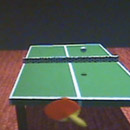
Abstract
Systems that detect the unaugmented human body allow players to interact without using a physical controller. But how is interaction altered by the absence of a physical input device? What is the impact on game performance, on a player's expectation of their ability to control the game, and on their game experience? In this study, we investigate these issues in the context of a table tennis video game.
The results show that the impact of holding a physical controller, or indeed of the fidelity of that controller, does not appear in simple measures of performance. Rather, the difference between controllers is a function of the responsiveness of the game being controlled, as well as other factors to do with expectations, real world game experience and social context.
ACM Digital Library
 The role of physical controllers in motion video gaming
The role of physical controllers in motion video gaming
DIS '12 Proceedings of the Designing Interactive Systems Conference
